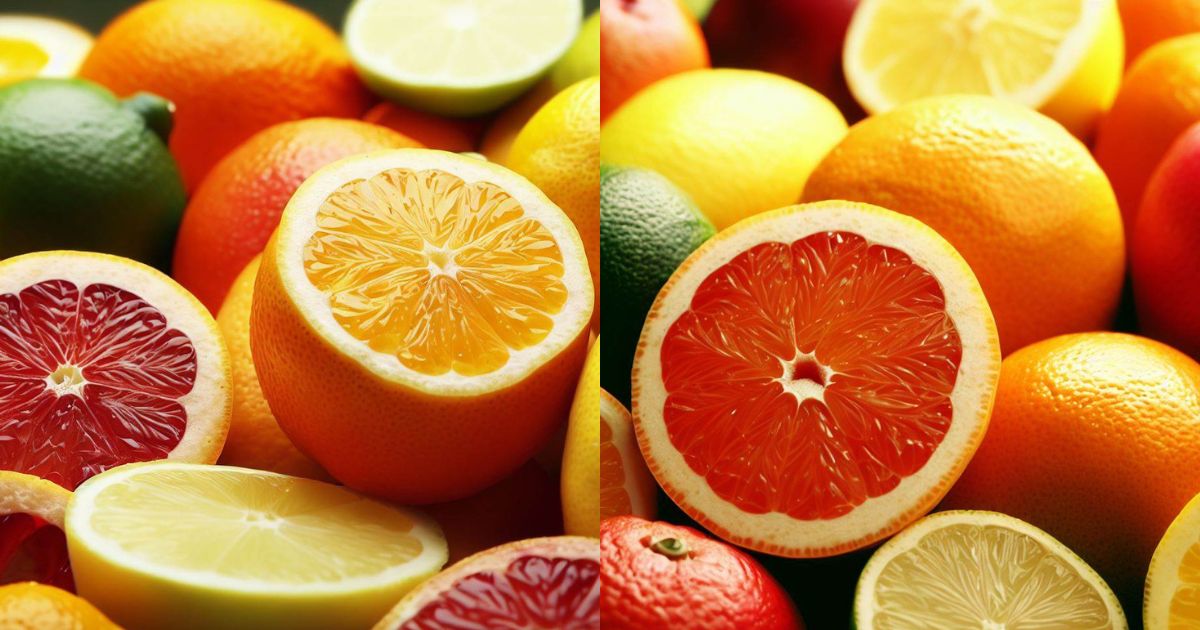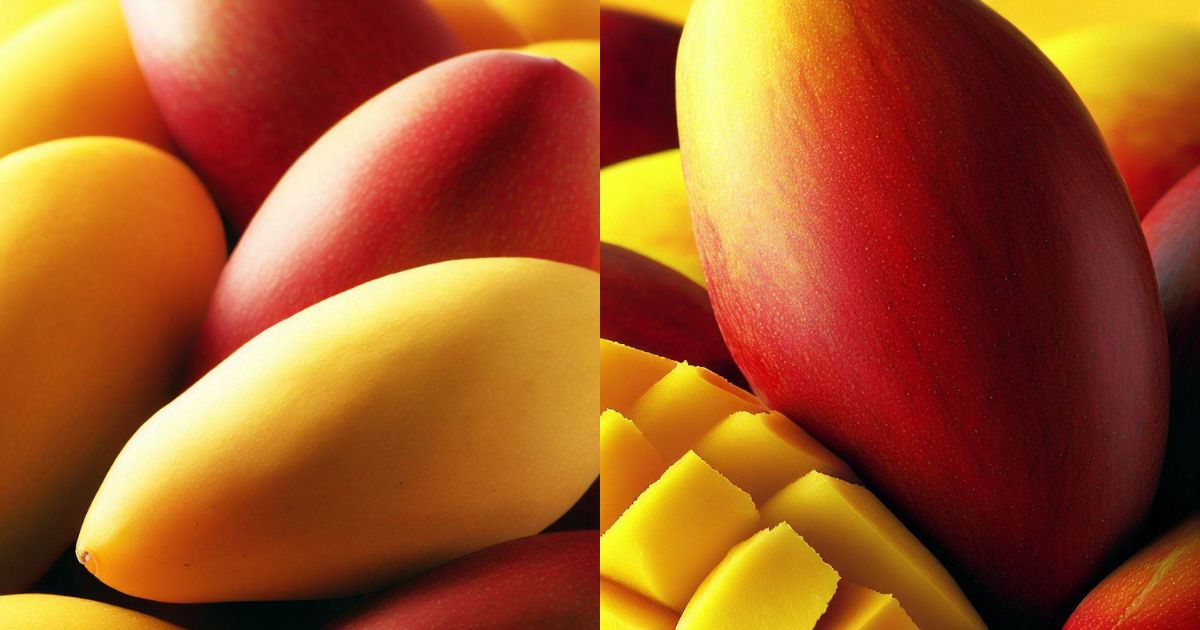Mango is among the most popular and delightful fruits globally, known for its juicy, sweet, and unique flavor. They come in various shapes, sizes, and colors, captivating fruit enthusiasts worldwide. However, amidst their joy, a question often arises – Is mango a citrus fruit? The answer might surprise you as we explore the intriguing world of mangoes and citrus fruits.
What Is a Citrus Fruit?
Understanding the definition of citrus fruit is crucial in distinguishing it from mangoes. Citrus fruits, renowned for their tangy and refreshing flavors, proudly belong to the esteemed genus Citrus within the family Rutaceae, boasting a diverse array of approximately 60 captivating plant species. These fruits have thick, fragrant rinds and pulpy flesh divided into segments filled with luscious juices. Some renowned citrus fruits include oranges, lemons, grapefruits, pomelos, and limes.
Key Characteristics of Citrus Fruits:
- Large fruits are abundant in vitamin C, limonoids, flavonoids, and citric acid.
- Thick rind and pulpy center.
- Segmented flesh filled with juices.
- Oils in the rind contribute to citrus aromatics and extracts.
- Evergreen trees or shrubs often have glossy oval-shaped leaves, and some species feature thorns.
- White, highly fragrant flowers with five petals.
- Fruits are classified as a type of modified berry called a hesperidium.
Citrus fruits originate in South Asia, East Asia, Southeast Asia, Melanesia, and Australia. Diverse cultures have revered these fruits for millennia, cherishing their culinary, medicinal, cosmetic, and industrial significance.
What Is a Mango?
Conversely, Mango belongs to the genus Mangifera in the family Anacardiaceae, comprising around 69 species of plants. These fruits showcase thin skins and fleshy centers containing a large seed or stone at the core. Mango varieties like Alphonso, Haden, Kent, Tommy Atkins, Keitt, and Ataulfo offer diverse tastes and appearances.
Key Characteristics of Mangoes:
- Medium-sized fruits packed with vitamins A, C, fiber, and antioxidants.
- Thin skin and fleshy center.
- Large seed or stone occupying the middle.
- Skin colors vary from green, yellow, orange, and red to purple, depending on the variety and ripeness.
- Evergreen trees with lance-shaped leaves; certain species have resinous sap that may cause skin irritation.
- Small greenish-white flowers with minimal fragrance.
- Fruits are categorized as drupes or stone fruits.
Mangoes trace their roots to South and Southeast Asia, and their cultural significance and utilization span over 4,000 years.
Why Are Mangos Not Citrus Fruit?
Having examined the distinctive traits of mangoes and citrus fruits, we can pinpoint the reasons behind mangoes not being classified as citrus fruits. These differences encompass various aspects, from acidity levels and seed types to peel characteristics.
- Acidity Levels: Citrus fruits boast high citric acid content (about 5% by weight), contributing to their tangy taste and extended shelf life. Mangoes, in contrast, contain significantly lower citric acid levels (about 0.71% by weight), rendering them less sour and more sweet.
- Seed Types: Citrus fruits house tiny seeds embedded within their flesh segments, easily removable or edible without difficulty. Conversely, Mangoes carry large seeds that dominate most of their flesh, necessitating careful removal or avoidance while consuming the fruit.
- Peel Characteristics: Citrus fruits feature thick peels filled with aromatic oils, offering diverse culinary applications such as zest, candied peel, and essential oils. In contrast, mangoes have thin, less fragrant peels that are often discarded or composted.
Conclusion
In conclusion, the answer to the intriguing question” Is mango a citrus fruit? is a definitive no. Mangoes belong to a different botanical family and showcase unique characteristics distinguishing them from citrus fruits. While both mangoes and citrus fruits offer an array of delightful flavors and nutritional benefits, appreciating their individuality enriches our experience of enjoying these delectable fruits. So, the next time you relish a succulent mango or savor the tanginess of citrus fruit, marvel at the wonders of nature and the diverse treasures it presents.
In Case You Missed It: The Best Fertilizer for mango tree: when and how to apply
People Also Ask (FAQs)
Q1: What are some benefits of eating Mango?
Mangoes offer tropical luxury and health benefits. They are high in vitamins C and A, fiber, and antioxidants, aiding digestion, improving skin and eyesight, and regulating blood sugar levels. They also contain essential nutrients like vitamins E, K, B6, potassium, magnesium, and copper, fighting oxidative stress and inflammation for overall well-being. Including mangoes in a heart-healthy diet can improve cardiovascular health. Enjoy the juicy and luscious goodness of mangoes for your body and well-being.
Q2: How can I tell if a mango is ripe?
The best way to tell if a mango is ripe is to squeeze it gently[1]. A ripe mango will feel slightly soft but not mushy. You can also look at the color of the skin, which can range from green to yellow to red, depending on the variety. However, color is not always a reliable indicator of ripeness, as some mangoes may remain green even when ripe. You can also smell the stem end of the Mango, which should have a sweet and fruity aroma.
Q3: How can I cut a mango?
There are different ways to cut a mango, but one of the easiest methods is to use a knife and a cutting board. First, wash and dry the Mango. Then, stand it upright on the cutting board and slice off the two sides along the pit. You should end up with two pieces of flesh and a center section with the pit. Next, score the flesh of each piece into cubes or slices without cutting through the skin. Then, use a spoon or your fingers to scoop the meat from the skin. You can also peel off the skin from the center section and cut off any remaining flesh around the pit.
Ripeness, as some mangoes may remain green even when ripe. You can also smell the stem end of the Mango, which should have a sweet and fruity aroma.
Q4: Is mango a citrus fruit?
No, it is not a citrus fruit. Mangoes belong to the genus Mangifera in the family Anacardiaceae, while citrus fruits belong to the genus Citrus in the family Rutaceae. They have different characteristics, origins, and structures of their fruits.
I am Gaushoul Agam
𝐂𝐨-𝐅𝐨𝐮𝐧𝐝𝐞𝐫 & 𝐂𝐄𝐎
ToAgriculture
I am an experienced Horticulture Officer in the Department of Agricultural Extension in Bangladesh. I am committed to improving agriculture and farming.
I created ToAgriculture to address global food safety concerns. These concerns are caused by a growing population, diminishing farmland, and the impact of climate change on agriculture. I assist readers in learning modern farming techniques.
I also help them control pests and diseases. Additionally, I guide managing agriculture sustainably. All of this is aimed at creating a better and more successful future in farming.
I have experience in field crops and horticulture crops. I know about fruit and vegetable farming, managing pests and diseases, irrigation, and grafting. Come with me as I share my knowledge and experiences to help you create a better future.


